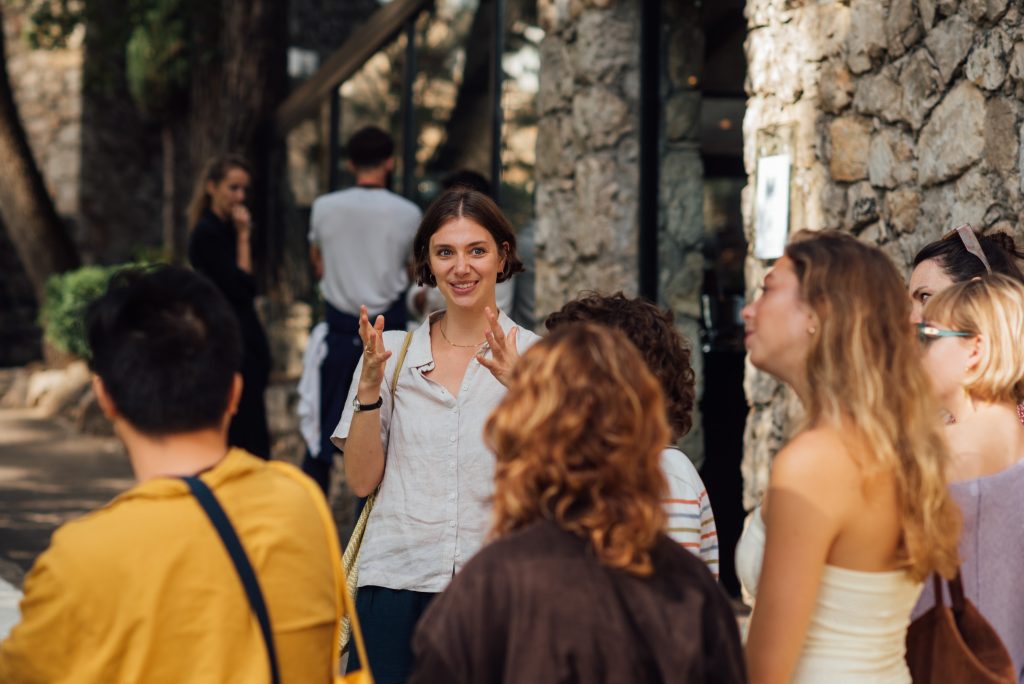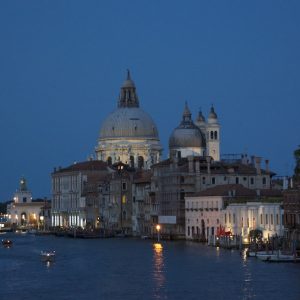-
PARIS • BERLIN • AMSTERDAM
14 April – 28 April 2025 – 2 WEEKS

This course is about the issue of our time; how do we live together? The course focuses on the built environment and culture travelling through Paris, Amsterdam and Berlin.
These three dynamic cities will give you the contextual thinking necessary when addressing the problems posed in further education and in a career. In Paris we study a revitalised 19th century city that changed society, which in turn led to Impressionism and Modernism. In Amsterdam we look at environment and sustainability, and in Berlin we focus on architecture and power.
The course provides the experience which leads to confidence and fosters ambition in our students. Future architects, policy makers and creators will enjoy this course. It is on those who reach further and think more broadly that the laurels of success lie.
Students will study living spaces, decoration, architectural style and detail, plans, elevations, city planning, policy, concept and evaluation. This course is specifically timed so that students can continue on to our six-week Early Summer Gap Year Course travelling throughout Italy.

Highlights:
- broaden your intellectual horizons – studying art, architecture & sculpture
- study art first hand with brilliant, unstuffy tutors
- practice the habit of creativity
- open to all: for any 18 – 22 year olds of every academic background who seek a cultivated mind
- access to once in a lifetime experiences (private visit to the Sistine Chapel and St. Mark’s Basilica)
- no classrooms and no homework: just learning in front of masterpieces!
Read “A day in the life of an AHA student” to get a better idea of what an AHA day looks like!
-

Paris
In Paris students will stay close to the Sorbonne, on the left bank, in the university quarter. One day will be given over to the rebranding of Paris from a dismal medieval, dysfunctional slum, into a city of light. This was Haussmann’s genius and it transformed society and created a new way of living, which in turn became a template for New York. Another day will be spent going out to the experimental Villa Savoy by Corbusier, which arguably changed the way we live. The Villa is not far from Giverny, which was Monet’s house and garden and made famous by his ‘Water Lilly’ paintings. This is often a crowded place, but in these months, it might be an ideal time to visit. A third day will be spent in Paris looking at some of the art and social changes that came about as a result of architectural change – notably Impressionism.
Berlin
The course will then fly to Berlin. On day one, we will look at Berlin as a city of the enlightenment and the centre of Bismark’s empire. We will also visit the Reichstag for breakfast on the roof and thereafter visit the wonderful modern dome by Norman Foster. A day will also be given over to Germania and Hitler’s plans for a model city, not unlike the Rome envisioned by Augustus or EUR by Mussolini. A day will also focus on Berlin after The Wall and how Germany has been reunited. There is also a fantastic contemporary art scene.
Amsterdam
-
A transformative experience:
At AHA, we carry our ethos wherever we go and our courses are designed for the creative, the curious and the adventurous. We intend for you to come away with more than just halcyon memories but also…
-

Take away a life-long love of learning and appreciation of arts and culture – something to be cherished on all future travels.
- A broader education – We fill the cultural gap in school education. Whether it’s mythology, Dante, Shakespeare, jazz or opera, we seek to open your mind to wonders that a prescribed school timetable cannot
- Something that stands out on a Personal Statement and CV – It illustrates an interest in The Arts and Culture, showing you have used your time wisely and engaged with up-and-coming talents in the creative industries
- Good conversation at mealtime
- An ability to critique, debate and discuss provoking subjects – not only making you more interesting as a person, but allowing you to stand out in a seminar or interview context
- A greater confidence in public speaking-and an understanding of the power of rhetoric
- Fresh Air & Exercise! After this long stint indoors…
- New Skills – including cookery, film-making, photography, painting, creative writing, songwriting, play-writing…
- An opportunity to step back from technology-and ideas of how to be inspired in your free time, preventing boredom.
- Preparation for university and/or the next stage – meeting new people, getting out of the school context and partaking in independent and collaborative thought
- A curious mind – Come away with questions and thoughts and aspirations for your future
- The ability to form and articulate new ideas effectively – We teach creativity as a habit that should be trained and encourage you to express yourselves freely. Not only useful for practicing artists or writers, but also useful for budding Entrepreneurs or those looking to break the mould.
-
-
This course travels throughout Europe studying: painting, architecture, sculpture, textiles, gardens, mosaics, drawings and decorative arts over the following periods:

- Bauhaus Movement
- Neue Sachlichkeit (New Objectivity)
- Impressionism
- Cubism
- Surrealism
- Dutch Golden Age Art
- De Stijl Movement
- Dutch Baroque
Within these periods we study

- architecture terms
- artists: their biographies, significances, influence and patronage
- Urbanism
- art criticism and propaganda
You will be in some of the most beautiful cities in the world

- Paris – for 19th century, impressionism and modernism
- Berlin – for architecture and power
- Amsterdam – for environment and sustainability
We teach the context of art, so we touch on the following where relevant:

- Music
- Political theory
- Economics
- Philosophy
- Theology
- Poetry
- History
- Food
- Anthropology
- Environmental Studies
- Architecture
We build a solid foundation of the terminology of art and history:

- architectural; vocabulary & descriptive terms
- geographical; Italy and Europe
- basic datelines, significant families and Popes
- general themes; politics, propaganda & patronage
AHA also issues our “Shortish Notes” which are an unusual compendium of maps, significant dates, lists and descriptions of mythological gods, emperors, old and new testament figures, saints, popes and leaders. The notes include architectural terms, notes on the guilds and the family trees major families. It is a much sought after document as no such item is to be found in print.
Apply now Gallery -
Our tutors are chosen for their intellect, knowledge, energy, manners, reliability and sensibility.

‘For you as a student, the reason why a tutor is so important to you is because they are accessible. They aren’t stuffy, they’re youthful, they’re inspiring, they’re somebody to look up to and they are somebody to be conversational with’ – Nick Ross, Director of AHA
What are the tutors like?

Illuminating, fascinating, inspiring!
Judging from thank you letters and word of mouth recommendations, we know that our tutors are a significant selling point for the course. AHA tutors are specialists, entirely approachable and have a passion for all things Italian. They are sympathetic and dedicated to encouraging the best in all students of every academic background.
Much as they wear their academic laurels lightly, they are committed to making comprehensible the artists, writers, and architects who are the real stars of the cultural galaxy.
Having brilliant tutors on the course who pitch in every evenings, travel with the students and stay in the same hotel, not only means they are on hand at all times, but also allows students to imbibe the positive wonder, happiness and satisfaction that we all get from Italy.
Students should drop any ideas they have about teachers versus students, as do all our tutors – this is not a ‘school trip’. Our tutors are dynamic, enthusiastic experts from various academic fields. They roll back the disciplines of formal education and provide an inter-disciplinary approach that includes (to name a few) philosophy, history, theology and mythology.
How do small tuition groups work?

Great teaching ratios are fundamental to on-site study and AHA’s ethos. Teaching to 9 students or fewer, tutors can reach everyone, draw them into discussion and satisfy the interests and capacities of each student.
Each day one or two tutorial groups set out in different directions to follow a theme according to the carefully structured itinerary. Tutors teach according to their specialist interests enabling students to appreciate different approaches to the subject. Usually a tutorial group would visit two or three sites in a morning with a break along the way.
Day by day students become more confident; understanding, enjoying and commenting on the vast visual world around them. Students are supplied with a suggested reading list and shorter notes, which are invaluable for the course and thereafter. We go to many places far from the madding crowd, some of which are public but are barely visited, others are by private appointment.
Before we have met any students, we form the tutorial groups by picking names from a hat. With each new major city these groups are reshuffled by this pre-ordained method. The dynamic of the party is therefore changed throughout the course and we find this a good way for students to get to know each other as we progress through Italy.
Want to know more? Read Nick Ross’ piece on why a tutor is not the same as a lecturer.
Apply now Gallery -
Dates & Fees Apply now
Accommodation

Our view on hotels is that it is better to stay near the middle of the wonderful cities we visit, where there is a sense of history and atmosphere. Rooms are shared with en suite bathrooms in 2’s and 3’s; occasionally we may use quadruple rooms for the shorter stays. Over the years we have built up strong relationships with family run hotels in all the cities we visit.
Luggage
 You will be expected to carry your own luggage, lift it onto trains, buses, upstairs occasionally and so on. This is no idle observation; if you have a bad back, tell us about it. Most people have luggage with wheels, but be sure they are robust and up to going over cobbles. Ruck sacks are good.
You will be expected to carry your own luggage, lift it onto trains, buses, upstairs occasionally and so on. This is no idle observation; if you have a bad back, tell us about it. Most people have luggage with wheels, but be sure they are robust and up to going over cobbles. Ruck sacks are good.In the run up to your course we will send notes about what to bring but please follow the old adage that whatever you pack at first you should then halve it. Furthermore, one of the joys of travelling is to come back with trophies from your travels, whether this be clothes, books or pictures. We have had occasions when students have spent a fortune either posting luggage or spending extra fees with airlines. Both should be unnecessary.
Transport
 When we move between cities we often take the train or we hire a bus. The train is perhaps more fun, with a real sense of travel. Usually, when leaving a hotel for the station we will walk for 10 minutes or so, but if you would like a taxi, we can order one for you.
When we move between cities we often take the train or we hire a bus. The train is perhaps more fun, with a real sense of travel. Usually, when leaving a hotel for the station we will walk for 10 minutes or so, but if you would like a taxi, we can order one for you.Flights
 When you register, we will inform you of the flights we have chosen for the group for you to book direct with the airline. If you come by another route, we will do our best to meet you, but bear in mind that once in Italy, tutors have lots of responsibilities both in terms of teaching and pastorally and they might not be able to meet you off the plane. In any event, we will give you good instructions on how to find the hotel and how to meet us.
When you register, we will inform you of the flights we have chosen for the group for you to book direct with the airline. If you come by another route, we will do our best to meet you, but bear in mind that once in Italy, tutors have lots of responsibilities both in terms of teaching and pastorally and they might not be able to meet you off the plane. In any event, we will give you good instructions on how to find the hotel and how to meet us.For non UK students, some fly to the UK, which is a major hub, and then join the group to fly to Italy. If they arrive a day early, we can advise on where to stay if needs be.
Photo: Airplane Flying (Malevich, 1915)
Meals, Food & Wine
 The food in Italy is one of the great pleasures of an AHA course. At lunchtime, students are free to do as they please – it’s a great time to explore or draw, but often students and tutors will end up enjoying an inexpensive lunch or picnic together. It is a similar situation at supper; students are free to do as they please but, for almost all evenings, tutors will canvas opinion and organise something fun. This might be supper out, or a film or a concert. We feel that convivial suppers for students and tutors make a strong bond on the course and are part of Italian life. It is where conversation flows and we at AHA understand your interests and passions.
The food in Italy is one of the great pleasures of an AHA course. At lunchtime, students are free to do as they please – it’s a great time to explore or draw, but often students and tutors will end up enjoying an inexpensive lunch or picnic together. It is a similar situation at supper; students are free to do as they please but, for almost all evenings, tutors will canvas opinion and organise something fun. This might be supper out, or a film or a concert. We feel that convivial suppers for students and tutors make a strong bond on the course and are part of Italian life. It is where conversation flows and we at AHA understand your interests and passions.Eating, diet and allergies are issues raised on the Registration Form and it is really important that we know.
Those coming on Gap Year Courses are over 18 and therefore allowed to drink alcohol; however, as detailed in the Code of Conduct, we expect that this is done in moderation and drunkenness is not acceptable. Responsible consumption of alcohol is, in our view, a lifelong issue.
Breakfast is included within the fees though it has to be said that Italian hotels often perform some indescribable ritual to their coffee to render it questionable.
Mid way through the morning, it is usual to perk ourselves up with a break for a coffee and rest.
Spending Money
Lunches and suppers are not included in the course price. We recommend that students bring £35 – £38 per day to cover these meals and spending money. Very occasionally, if a student has a problem with cash flow, tutors will lend money but for administrative reasons, we would be grateful if loans could be repaid before the end of the course.
Money is best drawn regularly on ATMs and in modest amounts for fear of inadvertent loss. Pre-loaded travel money cards are a good solution to this issue because, if lost, they limit exposure to fraud.
Mentoring & Care
With tutor ratios of 1:9 or fewer, there are never less than 2 and up to 4 tutors on each course. This promotes excellent care for young adults. AHA tutors are instructed and mentored before they can be considered senior tutors or a lead tutor. Tutors stay in the same hotel, travel together and enjoy meals in the company of students. Tutors are there to help and offer advice. At all times tutors are supported by AHA’s offices in the UK.
A brief look at our tutors’ page reveals that we have tutors of a variety of ages. We feel it is important to have young tutors who are both a mentor and inspiration to young adults as well as more venerable tutors. New tutors to AHA are trained via our manual, through training tutorials and while on courses as a trainee tutor.
We will send you a Code of Conduct which lays out the understanding between students and AHA about reasonable standards of conduct.
Throughout the Gap Year & Semester courses there are one to one tutorials during which the academic progress of students are discussed. These are especially useful to encourage the development of students and form the basis for references in the future if requested.
Museums, Itineraries & Timetables
All museum fees and special entry costs are included and make up approximately 15% of the fees. Bookings for most of our visits are made in advance; this means less time spent queuing and reinforces the need for punctuality throughout the course.
Pre-Course Preparation
We will send you our list “Books worth reading, films worth watching” none of which is obligatory but which may enhance your experience of the course. In the weeks running up to your course, you will receive a note on what to bring as well as useful notes to accompany the course. AHA will also send you a watercolour set and drawing pad. Practical art is not compulsory on the course but we hope that these will be useful for those who already are happy to draw while being an encouragement to others.
Application & Registration
 If you’re ready to apply, just go to How to Apply page to fill in the form to begin the two-part registration process. Once we have your application, we will contact you to discuss the course further. We will want to know more about you, what are your interests and plans. Importantly, it is a chance for you to ask detailed questions of us. All being well, we will send you a link to a registration form and give you details of how to lodge a deposit.
If you’re ready to apply, just go to How to Apply page to fill in the form to begin the two-part registration process. Once we have your application, we will contact you to discuss the course further. We will want to know more about you, what are your interests and plans. Importantly, it is a chance for you to ask detailed questions of us. All being well, we will send you a link to a registration form and give you details of how to lodge a deposit.By signing the registration form and returning it with a non-refundable deposit you are bound by the terms and conditions of the course. The terms and conditions require each attendee to have paid in full prior to the course date of departure. Should you need to cancel, there are clear guidelines and terms available. Where possible, and at our sole discretion, we will transfer your place to another course if needs be, having taken account of any pre-payments or unrecoverable costs.
Insurance
AHA carries public liability insurance to a total value of £5m in case AHA should cause loss or injury to a client or student. It is also essential that students should acquire sufficient insurance to cover the fees in the event that a student needs to cancel their course at a time when all or part of the fees are due. Insurance for health is also mandatory as well as repatriation. On top of this, you should insure your possessions, particularly electronics, having noted separately the make, mark and serial numbers of any valuables. You are obliged to inform AHA of the company providing the insurance cover and the Emergency Help telephone contact number. It is your responsibility to ensure that the insurance cover you purchase is suitable and adequate for your particular needs.
Payment Schedules
 At our discretion, we may offer interest free, monthly payments for a course. Full and final payment must be in our account before the course departs. Please contact the office directly to enquire about this.
At our discretion, we may offer interest free, monthly payments for a course. Full and final payment must be in our account before the course departs. Please contact the office directly to enquire about this.Scholarships & Bursaries
See our Scholarship page for details, read our blog “How to find grants for your gap year” and call us to ask about bursaries.
Risk Assessment, Responsibility
Those joining our Gap Year Courses are over 18 and young adults and can expect to be treated as such. Adult life goes with free will and free will has an element of risk within it. However, parents and students can reasonably expect AHA courses to be safe in the provision of services and tuition. To this end, we write extensive risk assessments for all our courses and we also have a crisis management plan. We follow the standards laid down by the Year Out Group and we review all our courses through questionnaires and tutor feedback. Lastly, we have public liability insurance to a limit of £5,000,000 per any one occurrence upon which we have never had to claim.
For UK residents, check the FCO website for their current risk assessments by country. For US residents, check the Smart Travel Enrollment Program (STEP) for up to date advice and help.




